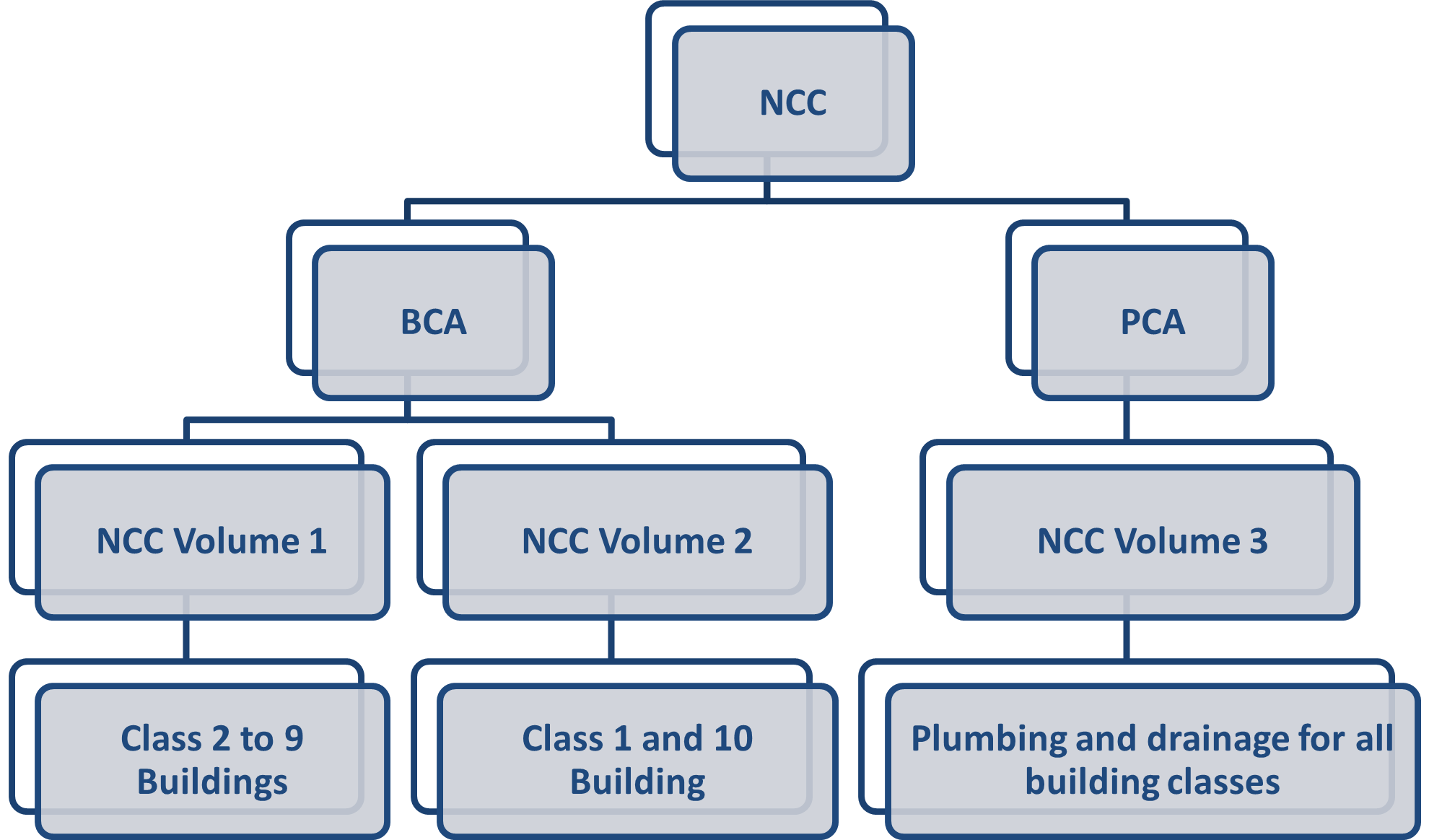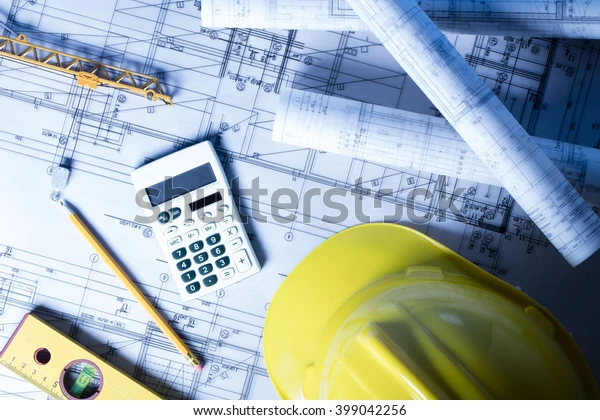When planning the waste management strategy for construction, identifying the current government and council environmental requirements for managing and minimising the waste from a building project is something to consider.
Strict compliance with these environmental requirements and standards is critical to waste management in building and construction projects. As a learner, you must fully understand and familiarise yourself with these requirements and standards as you start to undertake building and construction projects. Non-compliance can lead to severe consequences ranging from hefty fines, penalties, legal actions, poorly constructed structures and buildings, property damage, work-related injuries, and even death of workers and civilians.
As a future construction manager, you will review these environmental requirements and standards from a practical perspective; you must look at how they are applied to building and construction projects. This information is for those training to become builder/construction managers, building site manager/supervisors or contract administrators, and other related roles in designing and implementing waste management strategies.
This section will be looking at general building and construction methods and principles the associated government building and construction regulations that will impact the waste management plan and require compliance. When working in the construction industry, understanding the appropriate terminology, accessing government and council requirements and recognising how they impact the waste management strategy is of utmost importance to remain compliant.
Building and construction methods and principles
When exploring the principles of sustainable waste management, appropriate residential and commercial projects and directed in developing waste management strategies to comply with environmental and sustainability regulations and guidelines you must first familiarise yourselves with generic building and construction methods and principles. This information will enhance understanding of how waste management strategies can be incorporated into the worksite.

This topic will explore different types of construction methods and construction principles. The following is a general discussion as it is crucial to focus on waste management and how construction methods and principles can impact the waste management strategy instead of building design. For the purpose of this unit, you will look at these five standard construction methods:
|
Building and construction methods |
Description |
|
Wood or stick framing |
This method involves assembling the main skeleton of the home. Sections and items are installed step-by-step and then eventually used to build the entire home. |
|
Prefabricated construction |
Prefabricated homes use the same method for conventional stick framing, but they are built off-site, then transported and assembled on-site. They can be built more efficiently and still retain their value. |
|
Building and construction methods |
Description |
|
Modular construction |
Modular homes are similar to prefabricated homes; they are built off-site,then transported and assembled on-site. However, modular constructions have sections which are more likely to be “stacked” and are squared off into repeated sections called modules. They can also be built efficiently. |
|
Light gauge steel |
The light gauge steel method is similar to traditional stick framing, but each component is instead made out of metal. The advantages are the lack of rotting, shrinking or termite damage. Steel lasts longer and reduces the risk of drywall cracks, warping or shrinking. |
|
Concrete |
Concrete is a more popular material used in the foundations of homes and walls. Some concrete homes use either wood or steel for the framing before the concrete forms are applied. |
The construction method used for each project impacts the waste management strategy. For example, one construction method may create more waste product than another, or its type of waste may be harder to recycle. When planning the waste management strategy, those in charge of creating the waste management strategy should consider minimising adverse environmental impacts and promoting sustainability.
The building and construction method used on a project will undoubtedly impact the waste management strategy. When planning the reduction and removal of waste from the construction site in conjunction with the method of construction used, consider doing the following:
- effective, efficient and economical procurement of materials and products
- assessment of the whole of the life cycle of materials and products
- engaging with environmentally responsible suppliers
- managing resource demand and consumption
- managing environmental risk
- recycling, reclaiming and reusing materials
- implementing on-site litter abatement
- reducing packaging waste
Now you have a clearer understanding of the generic construction methods, you must now familiarise yourself with five general building and construction principles. These principles include:
- Environmental protection
- Safety
- Speed
- Economy
- Aesthetics
Below are some examples of how building and construction principles can impact a project.
|
Building and construction principles |
Scenarios |
|
Environmental protection |
The construction manager in charge of a site instructs his workers that they must follow the site's waste management policy and dispose of waste properly. |
|
Safety |
Workers are not allowed on site if they are not wearing personal protective equipment such as helmets and safety boots. |
|
Speed |
The project manager encourages all personnel to finish their tasks on time and provides incentives for tasks completed before the deadline. |
|
Economy |
Before beginning the project, materials were canvassed. The final materials selected were the lowest cost that still adhered to quality and safety standards. |
|
Aesthetics |
Construction work proceeds smoothly, and the finished product should be consistent with neighbouring construction. |
Three of the five principles outlined above are incredibly relevant to the waste management strategy, specifically the following:
Environmental protection
Environmental protection is often included in construction legislation, regulations and codes of practice. When considering the waste management plan, one should reduce environmental impacts derived from building and development. Many of these legislative regulations will be explored in the unit's following sections.
Safety
How you manage waste reduction, and removal must incorporate safety measures. Particularly, when looking at construction methods which involve demolition and excavation using heavy machinery and are deemed to be higher risk, all personnel involved in the construction project should be working in a safe environment. Work Health and Safety legislation often regulate the safety of building and construction; therefore, it is vital to access and implement all aspects of the worksite.
Economy
The economy of construction work must incorporate recycling, reusing and reducing waste on the construction project. Many of the measures the waste management plan incorporates can impact the project's final costs, which is a benefit to the company and the environment that should not be taken lightly.
Finally, after understanding the building and construction methods and principles you must familiarise yourself with five principles of sustainable waste management. These principles are from the National Waste Policy (2018). These principles include:
- Avoiding waste
- Improving resource recovery
- Increasing the use of recycled material and building demand and markets for recycled products
- Managing material flows better to benefit human health, the environment and the economy
- Providing information to support innovation, guide investment and enable informed consumer decision
Below are some examples of how each principle of waste management can impact a project.
|
Principles |
Scenarios |
|
|
Purchase materials in measured bulk amounts and avoid individual packaging. |
|
|
Pulling water from wastewater, filtering, and putting it back into the system as clean, useable liquid |
|
|
Use recycled timber doors, window frames on the residential build. |
|
|
Reduce the incidence of transporting materials by building on site when possible. |
|
|
Demonstrate and communicate the environmental and economic advantages of recycled, reclaimed or reused materials to clients when selecting materials for the building project. |
When planning the reduction and removal of waste from the construction site in conjunction with the principles and methods discussed, you must consider each scenario and complement environmental requirements for managing and minimising building waste.
Government building and construction regulations
Aside from comprehending the general methods and principles applied in the construction industry, it is also essential to recognise some of the government building and construction regulations which must be complied with. The principles of sustainable waste management for residential and commercial projects are directed at developing waste management strategies to comply with environmental regulations and guidelines. The future building professional must access and review regulations that will affect the waste management strategy. Reviewing these regulations will enhance your understanding of how waste management strategies can be incorporated into the worksite.
The tables below and on the following pages lists many of the general building and construction regulations, the sections relevant to waste management and how these relate to minimising waste on the building and construction site.
|
Sustainability regulation |
Sections |
How these relate to minimising waste on a building and construction site |
|
Water Resources Regulation 2007 |
8A Exemption from the requirement for water access entitlement—road works, earthworks, construction or landscaping—Act, s 30 (2) (a) (1) The authority may exempt a person from the requirement mentioned in the Act, section 30 (2) (a) (i) concerning surface water if the water is to be used for— (a) road works, earthworks or other construction; or (b) landscaping. (2) The authority may only give the exemption if satisfied that giving the exemption will result in improved environmental outcomes or other public benefits. |
Water systems must be sustained and protected. When you access and water resources, you have to be careful to get as much as you need. In this case, the water will be used to provide public benefits. There is a good reason for water to be accessed and used in reasonable amounts. |
|
Building (General) Regulation 2008 |
22 Consultation required concerning proposed building work—Act, s 152 (3) (c) (2) The certifier must be satisfied on reasonable grounds that the following consultations have been undertaken about the proposed building work: (a) if applicable, consultation with the relevant directors-general about— (ii) any waste management plan provided in the application |
By consulting with the relevant directors-general regarding the proposed waste management plan, you make sure that the plan will adhere to relevant legal requirements and standards. These requirements and standards were developed to reduce waste and handle waste responsibly. If the waste management plan complies with these requirements and standards, they will also achieve their aims. |
|
Waste Management and Resource Recovery Regulation 2017 |
18 Waste segregation—Act, s 64 (2) (a) and (d) (1) A person commits an offence if— (a) the person places waste in a domestic waste container; and (b) the waste is not domestic waste. (5) In this section: domestic waste— (a) does not include any of the following: (viii) construction waste; |
Segregating and disposing of waste properly, helps prevent waste that can still be recycled from being prematurely disposed of. It will make it easier to identify recyclables and find a way to re-use them. |
|
Environmental regulation |
Sections |
How these relate to minimising waste on a building and construction site |
|
Environment Protection Regulation 2005 |
46 Areas near development to be kept clear (1) A person in charge of development commits an offence if the person does not ensure that each footpath, gutter and road adjacent to the development is clear of soil, sand, building materials and waste. |
One way to keep areas near the construction site clear of waste and other debris is to minimise the project's amount. Even if you apply proper waste disposal or sorting, the more waste there is, the more chances it will end up in the paths and roads near the construction or development site. |
These are only general regulatory requirements and standards that apply to building and construction projects. It is important to remember that these requirements and standards are enforced differently across states/territories. Furthermore, legislative, and regulatory requirements and standards also vary depending on the specifications, type, nature, and size of a building and construction project.
There are many factors to consider when planning the waste management strategy for construction. These factors include identifying the current government and council environmental requirements to manage and minimise the waste from a building project.
This section will be looking at general building and construction methods and principles the associated government building and construction regulations that will impact the waste management plan and require compliance. When working in the construction industry, researching environmental guidelines and standards and recognising how they impact the waste management strategy is of utmost importance to remain compliant. Environmental guidelines and standards will be discussed in the following sections.

Digitally-based technology and applications to research environmental guidelines and standards and compile information electronically
To document your findings on government requirements, it is best to build a legal register. A legal register compiles all standards, laws, and regulations you have found and describes their relevance to your project. Use digitally based technology (such as computers, laptops, mobile phones or tablets) and applications to access and research the latest environmental guidelines, legislation, standards and codes of practice for the construction industry.
You will need two things when researching and creating an electronic register:
Internet
In addition to the legal and environmental requirements for waste management listed in the previous sections, you can also use the internet to search for a building, and environmental regulations that you think need to be covered in your project.
Spreadsheet software
You will have to systematically enumerate and update all legal information using a spreadsheet program. Spreadsheet programs include Microsoft Excel, Google Sheets, or LibreOffice Calc. Many builders' associations and corporations have templates to assist in tracking your compliance, and the ABCB also have compliance tracking and recording tools. It is certainly worth asking industry associations and regulators for assistance in these areas, and most will be happy to provide appropriate information on recordkeeping, compliance and waste management.
Compiling the legal or compliance register is best done from the outset of the project's initial consultations and design. It is best to develop the register template on a spreadsheet with initial compliance investigations recorded along with the waste management strategy.
The best register will list the requirements, a description and the relevance to the project. You may like to have compliance or legal counsel to review the documentation and raise any discrepancies or omissions. The live document can be updated or reviewed throughout the project, and access enabled for all involved.
Building a compliance register in the waste management program will help compile and share information electronically. Furthermore, it can become a reference tool for all who are associated with the project to review for clarification and allow shared resources to become an integral tool for collaboration between personnel and all stakeholders involved.
The NCC
The NCC is the primary code that provides technical guidelines for designing and constructing buildings and related structures in Australia. The NCC is produced and maintained by the Australian Building Codes Board (ABCB) for the Australian Government and each State Territory government. The most recent NCC version, the NCC 2019, can be freely accessed by logging on to the ABCB website.
The NCC contains the requirements and standards that all construction projects must comply with. Among other things, the NCC addresses energy efficiency and sustainability. Minimising waste is one way to achieve sustainability.
Overview of the national construction code

The NCC comprises three volumes: Volumes 1 and 2 constitute the Building Code of Australia (BCA) while Volume 3 is the Plumbing Code of Australia (PCA).
The following tables in the following pages provide an overview of the content of each volume of the NCC 2019.
Volume 1 of the NCC
The table below outlines the NCC Volume 1. This volume covers the requirements applicable for Class 2 to 9 (multi-residential, commercial, industrial and public) buildings and structures.
|
Section |
Section Title |
Topics Covered |
|
A |
Governing Requirements |
|
|
B |
Structure |
|
|
C |
Fire Resistance |
|
|
D |
Access & Egress |
|
|
E |
Services & Equipment |
|
|
F |
Health and Amenity |
|
|
G |
Ancillary provisions |
|
|
H |
Special Use Buildings |
|
|
I |
Omitted |
Existed in BCA 2013; has been removed in BCA 2019. |
|
J |
Energy Efficiency |
|
Volume 2 of the NCC
The table below outlines the NCC Volume 2. This section of the NCC covers the requirements applicable for Class 1 (residential) and Class 10 (non-habitable) buildings and structures.
|
Section |
Section Title |
Topics Covered |
|||
|
1 |
Governing Requirements |
Interpreting the NCC; compliance with the NCC; application of the NCC in States and Territories; NCC referenced documents; documentation of design and construction; building classification |
|||
|
2 |
Performance Provisions |
Performance requirements and verification methods for the following construction scope for class 1 and 10 buildings. |
|||
|
|
Performance Requirement |
Verification Method |
|||
|
2.1 |
Structure |
Structural stability and resistance; Buildings in flood areas |
Structural reliability; structural robustness |
||
|
2.2 |
Damp and weatherproofing |
Rainwater management; weatherproofing; rising damp; drainage from swimming pools |
Weatherproofing |
||
|
2.3 |
Fire Safety |
The spread of fire; Automatic Warning for occupants |
Avoidance of the spread of fire |
||
|
2.4 |
Health and Amenity |
Wet areas; room heights; personal hygiene and other facilities; lighting; ventilation; sound insulation; condensation and water vapour management |
Room or space height; Verification of suitable natural light; Verification of suitable indoor quality; Sound insulation; Verification of condensation management |
||
|
2.5 |
Safe movement and Access |
Movement to and within a building; Fall prevention barriers |
Wire barriers |
||
|
2.6 |
Energy efficiency |
Building; Services |
Verification using a reference building; verification of building envelope sealing |
||
|
2.7 |
Ancillary provisions and additional construction requirements |
Swimming pool access; Swimming pool recirculation systems; Heating appliances; Buildings in alpine areas; Buildings in bushfire-prone areas; Private bushfire shelters |
Combustion appliances; buildings in bushfire-prone areas |
||
|
3 |
Acceptable Construction |
Deemed-to-Satisfy Provisions that are considered to be acceptable forms of construction that meet the legislative requirements for complying with the Housing Provisions |
|||
|
3.0 |
Structural Provisions |
Structural design criteria (wind design, structural resistance, guidelines for using structural software) |
|||
|
3.1 |
Site Preparation |
Site preparation; earthworks; earth retaining structures; drainage; termite risk management |
|||
|
3.2 |
Footings and Slabs |
Footings and slabs; preparation; concrete and reinforcing; site classification; footing and slab construction |
|||
|
3.3 |
Masonry |
Unreinforced and reinforced masonry; masonry accessories; weatherproofing of masonry; masonry veneer; isolated masonry piers |
|||
|
3.4 |
Framing |
Framing; subfloor ventilation; steel framing; timber framing; structural steel members |
|||
|
3.5 |
Roof and Wall Cladding |
Roof cladding, gutters, downpipes and wall cladding; sheet roofing; roof tiles and shingles, gutters and downpipes; timber and composite wall cladding; metal wall cladding |
|||
|
3.6 |
Glazing |
Glazing for windows and doors |
|||
|
3.7 |
Fire Safety |
Fire properties for material and construction; fire separation of external walls; fire protection of separating walls and floors; fire separation of garage top dwellings; smoke alarms and evacuation lighting |
|||
|
3.8 |
Health and Amenity |
Wet areas and external waterproofing; room heights; facilities; light; ventilation; sound insulation; condensation management |
|||
|
3.9 |
Safe Movement and Access |
Stairway and ramp construction; barriers and handrails |
|||
|
3.10 |
Ancillary Provisions and Additional Construction Requirements |
Swimming pools; earthquake areas; flood hazard areas; construction in alpine areas; construction in bushfire-prone areas; attachment of decks and balconies to external walls of buildings; boilers, pressure vessels, heating appliances, fireplaces, chimneys, and flues |
|||
|
3.11 |
Structural Design Manuals |
The content of Part 3.11, which existed in BCA 2016, has been consolidated into a new Part 3.0. |
|||
|
3.12 |
Energy Efficiency |
Building fabric; external glazing; building sealing; air movement; services |
|||
The NCC Volume 3
The table below outlines the NCC Volume 3. Volume three covers plumbing and drainage requirements for all building classes.
|
Section |
Section Title |
Topics Covered |
|
A |
Governing Requirements |
|
|
B |
Water Services |
|
|
C |
Sanitary Plumbing and Drainage Systems |
|
|
D |
Excessive Noise |
|
|
E |
Facilities |
|
You should also note that state-specific references to legislation and policies affecting building are mentioned at the end of each volume. These policies refer to additional state requirements or variations of the general provisions of the NCC 2019.
State specific policies include Development Control plans and Local Environmental Plans. For example, the Development Control Code for Best Practice Waste Management in the ACT 2019 helps development projects achieve the maximum possible level of recycling materials on the site minimum possible level of waste sent to landfills. The code also aims to promote best practices in waste management, reducing the waste produced.
Environmental regulations and guidelines
Aside from the examples environmental and sustainability regulations provided in section 1.1.2, you can search for other regulations for building and construction that may apply to your project. The regulations for building and construction may be accessed through each state's government websites. Alternatively, these documents may be located through building and construction regulators for specific states.
Waste management is highly monitored in the building and construction industry and it is important you research and understand the legislation and associated acts and regulations relevant to your location.
Below is a table showing the legislation and regulations registers of Australia for Commonwealth and each territory:
|
Territory |
Website |
|
Commonwealth |
|
|
Australian Capital Territory |
|
|
New South Wales |
|
|
Northern Territory |
|
|
Queensland |
|
|
South Australia |
|
|
Tasmania |
|
|
Victoria |
|
|
Western Australia |
There are also guidelines which vary per state/territory that you may review and follow. These guidelines have varying purposes, but the general idea is that they are made to provide developers, and contractors with information on:
- How to avoid and minimise environmental impact
- The likelihood of impact of construction activities and how it can be assessed
- A framework within which due diligence obligations can be met with and possible environmental damage be avoided
These guidelines can be accessed through the Environment Protection Authority of your State/Territory. Other sources of guidelines include academic research on sustainability topics, and resources developed by non-governmental organisations (NGOs)
The generic terms regulations, codes and standards is something to remember when developing a waste management strategy. However, as a future construction managers, you will be looking a little closer at some waste management strategy inclusions.
In the initial design stage, minimising adverse environmental impacts and promoting sustainability should be implicated as early as possible. In this stage of the building process, you must plan ways to reduce waste before starting the job as this is one of the most straightforward measures to reduce costs and minimise adverse environmental impacts.
There are many resources provided by state and industry regulators to assist in the planning of waste management which in turn serve to minimise environmental impacts and promote sustainable construction. Many of these resources have set targets for waste and recycling, which the construction industry can aim to meet. Some of these can be found below:
|
Waste and Recycling Targets across Jurisdictions |
|
|
State |
Waste Management Strategy |
|
Australian Capital Territory |
Waste Management Strategy 2011-2025
|
|
New South Wales |
Waste Avoidance and Resource Recovery Strategy
|
|
Northern Territory |
Waste Management Strategy for Northern Territory 2015 – 2022
|
|
Queensland |
Waste Management and Resource Recovery Strategy Waste Strategy 2015 – 2022 |
|
South Australia |
Waste Action Plan (Draft) |
|
Tasmania |
Circular Economy Policy and Action Plan (Draft) |
|
Victoria |
Waste Avoidance and Resource Recovery Strategy 2014 – 2021 |
Australian Standards
What are Standards?
Standards are voluntary documents that set out specifications, procedures, and guidelines to ensure products, services, and systems are safe, consistent, and reliable. They cover various subjects, including consumer products and services, the environment, construction, energy and water utilities, and more.
Are standards mandatory?
In general, standards are voluntary: the public is not obliged to conform to standards on their own. However, standards become mandatory when referenced by government and legislation. In Australia, State and Commonwealth government legislation require compliance with the Australian Standards (AS) and joint Australian/New Zealand Standards (AS/NZS).
AS and AS/NZS
Australian Standards (AS) are sets of standards developed by Standards Australia, while AS/NZS standards are jointly developed with Standards New Zealand. AS and AS/NZS for building and construction is primarily referred to in Australian building codes and legislation. For builders and contractors, familiarity with these standards is vital to deliver quality work and simultaneously abide by state laws.
The standards catalogue for building and construction may be accessed through the Standards Australia site. Complete access to standard documents would require purchasing the copies from the Standards Australia Webstore or SAI Global. Alternatively, these documents may be located through libraries that maintain a subscription to Australian Standards, such as the National Library of Australia.
Further to the NCC and development control code for Best Practice Waste Management, there are standards that you can review when minimising waste on a building and construction site.
- AS/NZS ISO 14001:2016 Environmental management systems - Requirements with guidance for use
- AS/NZS 3012:2019 Electrical installations - Construction and demolition sites
- AS/NZS 3831:1998 Waste management - Glossary of terms
- ISO 15270:2008 Plastics - Guidelines for the recovery and recycling of plastics waste.
In conclusion, the NCC and state/local environmental and sustainability regulations about waste management must be a primary consideration for the waste management plan. Compliance must be proven when managing waste for the construction project.
Developing a waste management strategy
Comprehending the general methods, principles environmental guidelines, codes and standards applied in the construction industry is important when compiling strategies and processes. Knowing how to develop a waste management strategy will enhance your understanding of how waste management strategies can be incorporated into the worksite.
Site waste management plans and strategies are an essential tool for construction companies of all sizes to:
- significantly improve the environmental performance of the organisation;
- comply with the regulatory controls;
- reduce costs when disposing of waste.
Developing the waste management strategy for a building or construction project is a two-step process: First, you must research and plan the strategy, secondly is the development of the formal document.
Researching and planning the waste management strategy
Researching and planning the waste management strategy for the construction project requires you to:
- Locate and review the project specifications, including construction methods and principles.
- Locate and review the relevant legislation and regulations on construction, environmental practices and sustainable building.
- Locate and review the relevant guidelines, industry codes and standards relevant to waste management, including safety.
- Revise current state and local industry regulations for the building and construction industry.
- Record all relevant information about environmental performance; meeting regulatory controls and reducing the rising costs of disposing of waste
Developing the waste management strategy
A waste management strategy contains information related to handling waste produced on the project site. This may include, but is not limited to, how to handle harmful waste, segregate waste, dispose of waste, etc. By incorporating the information discovered in the planning stage and aligning it with practices in which they can be implemented, the waste management strategy becomes a live document ready to be implemented.
Therefore, for each step in the development phase, you must consider the information located in the planning stages and that each step considers environmental performance, regulatory controls, reduces costs, and increases sustainable practices.
Here are further steps you may take to develop the waste management strategy:
- Consult with industry regulators and inspectors involved in building and constructions projects regarding waste minimisation strategies incorporate their feedback into waste management strategies for the project.
- Communicate with the following professionals involved in the building and construction projects:
- Architect
- Designer
- Engineer
- Other relevant professionals
- The communication goal is to discuss incorporating a waste minimisation strategy for the project they are involved in.
- Locate the Communications Log to outline all the waste management information you need to document when communicating with relevant personnel for building and construction projects.
- Locate workplace or industry templates for creating waste management strategies in the workplace.
- Use the workplace or industry templates to develop the project's waste management strategy.
- Minimise adverse environmental impacts and promte sustainability by:
- effective, efficient and economical procurement of materials and products
- assessment of the whole life cycle of materials and products; i.e. evaluate building and construction materials to identify high quality and more durable materials that will extend the life of the structure and simplify its future extension and refurbishment.
- engaging with environmentally responsible suppliers
- managing resource demand and consumption; i.e. adopt strategies to minimise the volume of site excavation and other materials that are disposed of in the landfill.
- managing environmental risk; i.e. create a risk assessment.
- recycling; i.e. using recycled materials where appropriate that meet regulatory and standards' restrictions, including site excavations and other materials.
- reclaim and reuse materials; i.e. determine and use demolition practices to increase recycling and reuse materials.
- on-site litter abatement
- packaging waste reduction; i.e. develop procurement specifications that seek to minimise packaging waste
- workplace procedures and workplace safety requirements
- Include calculated costs and savings for each section of the strategy - Calculate costs, potential savings and advantages of a waste management strategy and negotiate these with clients.
- Communicate with all the relevant personnel of each project and ask for their approval of the waste minimisation strategies you developed.
- Formalise your waste management strategy.
Although the development of a waste management strategy may seem exhaustive, when you incorporate the information discovered in the planning stage and align it with practices to be carried out throughout the construction project, you are not only remaining compliant but provide efficient, economical and environmentally friendly buildings.

When planning the waste management strategy for construction, factors to consider include costs, savings and advantages of a waste management strategy when managing and minimising the waste from a building project.
This section will be discussing costs, potential savings and advantages, which will impact the waste management plan and negotiating with the client to create savings and advantages where the waste management is concerned. When working in the construction industry calculating costs, potential savings and advantages of a waste management strategy and negotiating these with clients impact the waste management strategy and is of utmost importance to remaining economical and compliant.
Calculate Costs, Potential Savings and Advantages of a Waste Management Strategy
A commitment to reducing waste at the preliminary stage of construction is more likely to persist throughout the project. In the development phase of the waste management strategy, the significance of calculating costs, potential savings and the economic advantages of a waste management strategy was stipulated. Additionally, negotiating costs, potential savings, and the economic advantages of a waste management strategy with clients is something to attain. The costs of the waste management strategy and the potential saving achieved in terms of efficiency and overall environmental benefits demonstrate these advantages far outweigh the obstacles they may initially seem to create.
The quickest analysis you can carry out is the cost-benefit analysis which will determine if the strategy's benefits outweigh the costs. Below is a procedure for conducting such an analysis.
Step 1: Brainstorm costs and benefits
Make a list of all costs and benefits associated with the waste management strategy. Study the waste management strategy throughout its life cycle. Some costs may include: equipment, transportation, and labor. Some benefits may include: recovered resources, financial incentives, and potential savings.
Step 2: Assign monetary value to costs and benefits
Calculate the monetary value of each cost and benefit. For each cost, make sure to account for any related costs in training, logistics, and overhead. Consider also if trainings would contriibute to a decrease of productivity, and make sure to account for that as well.
Step 3: Compare costs and benefits
Finally, you need to determine whether the benefits outweight the costs. Here is a simple equation to calculate the payback period given that the same benefits are received each period. [Total Cost/Total Revenue (benefits) = length of time (payback period)
Incorporating a cost measurement table into each section or process in the waste management strategy is a simple way of demonstrating the calculation, savings and economic advantages. One of the best ways to exemplify cost-saving measures and minimise adverse environmental impacts and promoting sustainability is by effective, efficient and economical procurement of materials and products.
Procurement calculations
|
Calculated cost |
Briefly describe one calculated cost in their waste management strategy. For example:
|
|
Calculated potential saving |
Briefly describe one calculated potential saving in their waste management strategy. For example:
|
|
The advantage compared to other waste management strategy alternatives |
briefly describe one advantage the waste management strategy has compared to other waste management strategy options. For example:
|
In the building and construction industry, new, cost-effective building methods that encourage sustainability are being developed. Many of these new methods, such as prefabricated and modular constructions, reduce waste using the same materials and products each build. Therefore, materials are cut to standard sizes and styles with the same specifications regardless of the project. Modular construction, in particular not only reduces cast-off waste but can also reduce waste due to its stacking methods and offsite builds.
Traditional means of waste disposal in Australia is landfill, but this is uneconomic because of the following reasons:
- Costs to communities for operating and maintaining landfill sites are high
- Availability of suitable land is limited
- Reuse options for landfill sites are limited due to potential health hazards
- Remedial action is expensive
- Emissions and leachate from landfill sites can be highly toxic due to concentrations of heavy metals and toxic chemicals
- Tipping fees are increasing rapidly to reflect the real cost of disposal.
In newer builds, using prefabricated methods incorporating regulated material sizes and styles, cost competitiveness of recycling options increases. Waste minimisation efforts are rewarded. As seen, waste management strategies which focus primarily on reducing waste are an integral part of sustainable building.
Negotiating with Clients

The cost management table demonstrated previously can be an essential tool for managing project costs and sustainable practices; however, it can be invaluable when negotiating with clients. Clients will often have their perceptions of what the project specifications will include, which cannot be easy to adjust.
Providing clients with a visual tool will help demonstrate how sustainable practices can be cost-effective options to incorporate into the construction project. When discussing with your client, be sure to highlight:
- The revenue that may be gained from the strategy
- The relative financial advantage of having such a strategy over having none
- Resources that may be reused and recovered, and how they may contribute to quality construction
- Health and safety and environmental sustainability
In your negotiations with the client ensure you ask the client if they would prefer to switch to the alternative waste management strategy or stay with the current one. If they still choose to stick with the current waste management strategy, try to convince them to switch by:
- Asking them what they do not like in the alternative strategy
- Suggesting changes to the alternative strategy that would address what they do not like
Do not force the client to make the switch if they are sure that they would prefer to go with the original strategy. With the appropriate communication techniques and reassurance, the negotiation process is more likely to have favourable outcomes.

As a future construction manager, there are many factors to consider. These elements include communication with the architect, designer, engineer and other relevant professionals to ensure project plans incorporate waste minimisation strategies.
This subchapter will discuss establishing effective communication with the architect, designer, engineer and other relevant professionals, to ensure project plans incorporate minimisation strategies where the waste management is concerned. When working in the construction industry, effective communication can drastically impact the waste management strategy and is of utmost importance to remaining economical, efficient and compliant.
Communicate and collaborate effectively with others
The execution of waste management procedures in a construction project is only as effective as the communication between all personnel and stakeholders involved. To establish effective communication with the architect, designer, engineer and other relevant professionals all must be well-informed for collaboration to ensure project plans incorporate waste minimisation strategies. As the manager, you will primarily be responsible for the procedures related to waste management. You will need to inform and instruct the relevant personnel of these waste management procedures incorporating digital tools such as project management softwares, and shared calendars with relevant project or task deadlines. that will allow effective collaboration. This collaboration will require digital devices such as laptops, mobile phones, or tablets. This passage will explore how to communicate organisational waste management processes and industry requirements to relevant personnel.
To effectively disseminate information after you have identified the requirements and outlined the quality control processes, you need to:
 |
 |
 |
 |
| Identify what information you need to convey and where you get it from | Identify who you want to relay this information | Keep the information simple and easy to understand | Use available means of communication to make information more accessible |
Identify what information you need to convey and where you get it from.
The first step to effective information dissemination would be to work with what you have on hand. In general, the following documents provide pertinent information on waste management processes and industry requirements:
- Waste reduction manual
- Waste management strategy and associated documents
- Waste management checklists
- Contract Specifications
- Standards and Codes
These documents will need to be digitised and prepared for ease of online communication and collaboration. After going through the contract specifications, codes and standards, you need to consult with the company’s specific waste management personnel. You need to identify which information would be relevant and condense this information; otherwise, you will only be bombarding the site personnel with information that may be unrelated to them.
Identify who you want to relay this information to.
As previously mentioned, the information you have gathered will only be useful to specific people to a certain extent. Therefore, you would need to categorise the information according to whether they are relevant to everyone or a particular group of people only. For example, the company’s waste management manual contains standard operating procedures that need to be communicated to all personnel on-site. Therefore, it must be stored in a location that can be accessed from the whole organisation, such as SharePoint or Google Drive. However, the waste management processes related to architecture would only be relevant to the people assigned to work on the design and related trades. Namely, the architect, designer, engineer and other relevant professionals such as industry regulators and local council will all be included in the initial stages, to ensure project plans incorporate waste minimisation strategies.
Keep the information simple and easy to understand.
As you would be working with a diverse set of people, it is vital to clearly and concisely present the information regarding waste management processes and industry requirements. Keep the sentences short and straightforward so that everyone can skim them and understand them easily. Abide by company policy for digital communications such as email templates and document storage protocols. Also, use simple diagrams and flowcharts to outline waste management strategies. You may also collaborate online with engineers and administrators to ensure the coherence of the information you want to present.
Use available means of communication to make information more accessible.
Lastly, you need to maximise the use of available means of communication on site. You may opt to communicate necessary waste management specifications and requirements through verbal communication, printed materials (memorandum, etc.), email, phone calls, and if necessary, instant messaging alerts.
Worksite processes and requirements need to provide documents and references that the personnel on-site can easily access and go back to. In this regard, printed materials (such as memoranda and letters) and other means that can easily be documented (like emails) are preferable. You may supplement these means with verbal communication and phone calls to highlight necessary information and deliver them quickly. Instant messaging applications may also help send quick alerts and useful links regarding quality control processes and requirements.











